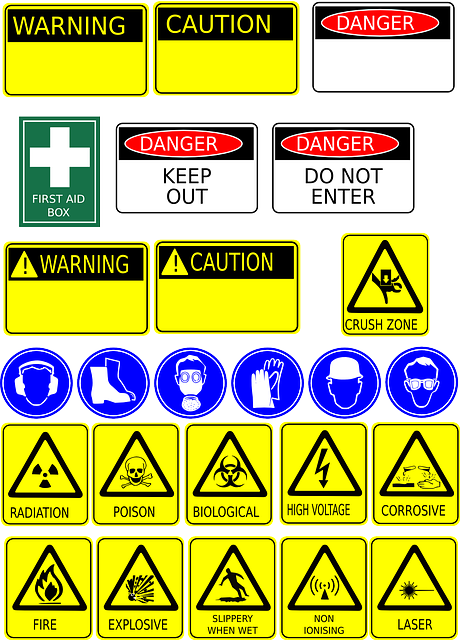In recent years, with a growing reliance on commercial vehicles, commercial driver verification has become essential for mitigating risks and enhancing road safety. The current manual process is inefficient due to outdated databases and paper records, causing delays and inconsistencies. Implementing robust background checks, skill assessments, and advanced technology like online platforms and data analytics is crucial for identifying potential risks and maintaining regulatory compliance. By streamlining the verification process and adopting proactive measures, transport businesses can focus on optimization while ensuring only qualified professionals drive, thereby fostering public trust and safer road environments.
The transportation sector faces growing challenges ensuring the safety of commercial drivers, who operate heavy machinery and carry millions in cargo. As accidents and incidents rise, so does the importance of comprehensive commercial driver verification. This article explores the necessity of rigorous screenings, highlighting the current shortcomings in the verification process and offering solutions. We delve into effective background checks, skill assessments, technology integration, and best practices for continuous improvement to ensure compliance with evolving regulations.
- The Rising Importance of Driver Screening in Transportation Safety
- Challenges in the Current Verification Process for Commercial Drivers
- Implementing Effective Background Checks and Skill Assessments
- Leveraging Technology for Efficient Driver Verification
- Best Practices for Continuous Improvement and Regulatory Compliance
The Rising Importance of Driver Screening in Transportation Safety

In recent years, ensuring transportation safety has become a paramount concern, especially with the increasing reliance on commercial vehicles for freight and passenger transport. The importance of driver screening cannot be overstated in this context. A thorough verification process for commercial drivers is no longer just a best practice but an indispensable component of maintaining a safe road network. With more than 3.5 million commercial drivers operating across various sectors in the US alone, according to the Federal Motor Carrier Safety Administration (FMCSA), implementing robust driver screening methods is crucial.
Driver screening plays a pivotal role in mitigating risks by verifying a driver’s qualifications, skill level, and overall fitness to operate heavy machinery. This involves checking their driving history, medical suitability, and background, as well as assessing their knowledge of safety protocols. The goal is twofold: to prevent accidents caused by incompetent or unsafe drivers and to foster public trust in the transportation industry. Effective commercial driver verification systems are game-changers in enhancing road safety, ensuring that only qualified and reliable professionals take the wheel.
Challenges in the Current Verification Process for Commercial Drivers

The current verification process for commercial drivers faces several challenges, highlighting the urgent need for enhanced screening methods. One of the primary issues is the manual and often time-consuming nature of background checks. Traditional methods rely heavily on paper records and manual cross-referencing with various databases, which can lead to delays and inconsistencies. This becomes a significant hurdle when dealing with high volumes of driver applications, as it may take weeks or even months to verify crucial information such as driving history, license validity, and any past offenses or disqualifications.
Additionally, the current system struggles to keep up with the evolving digital landscape. Many records are still maintained on outdated platforms, making real-time verification difficult. The lack of a unified, digital system for commercial driver verification results in fragmentation and potential errors. This is particularly problematic given the mobile nature of the trucking industry, where drivers often move between states, requiring seamless and instantaneous access to their verification data.
Implementing Effective Background Checks and Skill Assessments

Implementing effective background checks is paramount in the transportation sector to ensure safety and mitigate risks. Comprehensive screenings should include verifying criminal records, past employment history, and any relevant driving violations or accidents. Commercial driver verification processes play a crucial role in identifying potential red flags that could impact a driver’s ability to operate vehicles professionally. By thoroughly examining these aspects, transport companies can significantly reduce the chances of incidents caused by negligent or unqualified drivers.
In addition to background checks, skill assessments are essential. These evaluations ensure that drivers possess the necessary skills and knowledge to handle various driving scenarios, including emergency situations and adverse weather conditions. Regular skill tests, especially for those involving heavy machinery or specialized vehicles, can help maintain high safety standards. Transport businesses should adopt a proactive approach by incorporating these measures into their hiring and ongoing employee assessment strategies.
Leveraging Technology for Efficient Driver Verification

In today’s digital era, leveraging technology for efficient driver verification is more crucial than ever. Online platforms and databases play a pivotal role in streamlining the process, allowing transportation companies to cross-check credentials swiftly and accurately. Advanced systems enable real-time verification of commercial driver licenses (CDL), ensuring that only authorized individuals operate heavy machinery.
This digital transformation not only enhances safety but also saves time and resources for businesses. Automated processes eliminate manual errors and reduce paperwork, making it easier to manage large fleets. With technology at the forefront, companies can focus on optimizing routes and improving overall operational efficiency while maintaining stringent driver screening standards.
Best Practices for Continuous Improvement and Regulatory Compliance

To ensure continuous improvement and regulatory compliance within the transportation sector, implementing robust best practices for driver screenings is paramount. This includes comprehensive background checks that go beyond basic criminal records verification. Commercial driver verification should encompass a thorough review of driving history, including previous employers, accidents, and violations. Utilizing advanced technology such as data analytics can help identify patterns or red flags in a driver’s record that might otherwise be missed.
Regulatory bodies often update standards to enhance safety, necessitating ongoing adaptation in screening methods. Staying abreast of these changes is crucial for maintaining compliance. Continuous improvement also involves periodic refresher courses and skill assessments for drivers to stay updated with the latest regulations and safe driving practices. By adopting such measures, transportation companies can foster a culture of accountability, thereby reducing risks and ensuring a safer road environment.














